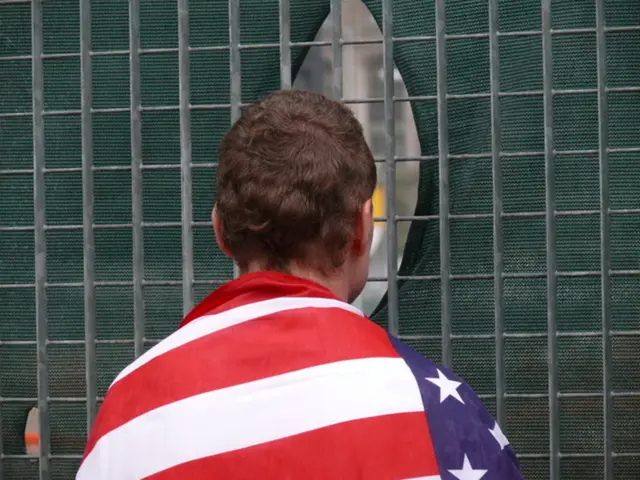Health Institutions in Iowa Face Difficulties in Doctor Recruitment
In the tranquil town of Sigourney, Iowa, the Keokuk County Hospital, with its humble 14 beds and simple emergency room, operates around the clock. The facility, which lacks a delivery ward and an operating room, relies on just two full-time doctors to address its needs. Yet, the hospital administration is in search of an additional physician to aid them in their daily duties. Finding new medical professionals, particularly for rural areas, has become increasingly challenging due to a nationwide shortage exacerbated by the ongoing pandemic and its associated burnout.
Approximately 40 minutes away, Washington County Hospital encounters a similar predicament. It boasts 22 beds but struggles to secure enough medical personnel, including doctors and nurses. Hospital leader Todd Patterson attributes the issue to a problem that arose before the pandemic but has since escalated as numerous older doctors chose to retire during the crisis, while younger replacements have been scarce. Healthcare workers endured grueling shifts during the height of the pandemic, with many deciding to leave the profession altogether due to the immense pressure and stress, further exacerbating the shortage.
The absence of a sufficient workforce is a growing concern for health experts, who claim that the shortage was long in the making and the pandemic merely accelerated its onset. Many doctors picked up the mantle during the emergency period but were left too fatigued when the crisis subsided, leading to their departure. As a result, the gap left behind is considerable.
In light of this crisis, Iowa ranks low in terms of the number of doctors available to patients – falling to 44th place out of 50 states. This statistics indicates that many residents struggle to access timely healthcare, particularly in rural areas where hospitals are already stretched thin and understaffed. Iowa Medical Society Chief, Christi Taylor, categorizes the situation as a full-blown crisis necessitating immediate attention.
A national survey from 2022 revealed that burnout among healthcare workers is at an all-time high. Many contemplate a career change or have already taken that step. Although more individuals have entered the healthcare field since the pandemic, the numbers still fall short of making up for the growing number of retirees and those leaving the profession.
Moreover, the nation's aging population poses a challenge. As people continue to age, they will require increased care. To meet this need, the country will need more doctors – a goal that appears increasingly elusive. The Association of American Medical Colleges estimates that by the year 2036, the U.S. could be missing nearly 86,000 physicians if no action is taken. This shortage means that more individuals will be forced to seek care in emergency rooms because they cannot secure regular appointments.
To combat the shortage, Iowa lawmakers are exploring various options. They seek to bolster healthcare resources in underserved rural areas by offering assistance to medical students who agree to work in Iowa. The state is also working to bring more residency spots to Iowa, ensuring that medical school graduates have opportunities to train and work in the state without having to leave to obtain necessary training elsewhere. By doing so, rural Iowa hospitals might have a chance to secure much-needed manpower and avoid sinking further into staffing crises.
Without swift action, facilities like the Keokuk County Hospital may soon find themselves struggling to maintain their workforce, leaving residents without access to timely healthcare services, particularly in times of need.
- The Keokuk County Hospital in Sigourney, Iowa, is seeking an additional physician to help manage chronic-diseases like chronic-kidney-disease and COPD.
- Washington County Hospital, located about 40 minutes away, faces a similar challenge, needing more medical professionals to address respiratory-conditions such as COPD.
- Healthcare experts view the shortage of medical personnel as a crisis, exacerbated by the ongoing pandemic and its associated burnout.
- Iowa ranks low in the number of doctors available, falling to 44th place out of 50 states, making it challenging for residents to access timely health-and-wellness services.
- A national survey from 2022 revealed that burnout among healthcare workers is at an all-time high, with many considering a career change.
- Even though more individuals have entered the healthcare field since the pandemic, the numbers are still insufficient to make up for the growing number of retirees and those leaving the profession.
- The aging population poses a significant challenge, as people will require increased care, but the country may be missing nearly 86,000 physicians by 2036 if no action is taken.
- Iowa lawmakers are exploring solutions to combat the shortage, such as offering incentives to medical students who agree to work in Iowa and increasing residency spots.
- By securing more manpower for rural hospitals, facilities like Keokuk County Hospital might avoid sinking further into staffing crises and ensure the availability of eye-health and hearing services.
- The absence of a sufficient workforce is a concern not only for primary health services but also for specialized fields such as Alzheimer's disease, autoimmune-disorders, and multiple-sclerosis.
- Migraine patients may find it difficult to receive timely treatment due to the shortage of healthcare professionals, affecting their general-news and personal-growth.
- Cardiovascular-health is another area that may suffer from the shortage, with experts warning of a rise in heart diseases like stroke and hypertension.
- Skin-conditions like psoriasis and digestive-health issues might go unchecked in rural areas due to the shortage of healthcare workers.
- Career-development in the healthcare sector may suffer as well, with fewer opportunities for employees to specialize and grow professionally.
- Policy-and-legislation plays a crucial role in addressing this crisis, as it can help reduce the number of job-search challenges faced by medical professionals in Iowa.
- Education-and-self-development is essential to addressing the shortage, with online-education opportunities offering a chance for those interested in healthcare to learn from remote locations.
- Mindfulness and stress management techniques like meditation and yoga may help healthcare workers cope with the stresses associated with their profession and combat burnout.
- Workplace policies promoting work-life balance and improving productivity could also help retain existing healthcare workers in Iowa.
- War-and-conflicts, accidents, crimes, and justice issues may further complicate the healthcare system in Iowa, requiring medical professionals to handle a broader range of scenarios.
- Fires and learning opportunities for skills-training could help fill the healthcare workforce gap, allowing Iowa residents to access the care they need for a variety of medical-conditions, from chronic diseases to neurological disorders.








